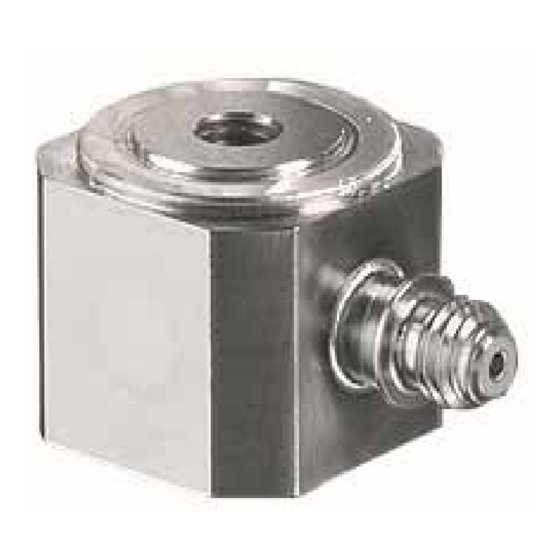
Summarization of Contents
Introduction
Forword
Provides a thank you and context for the instruction manual.
2. Important notes
2.1 For your safety
Essential notes for personal safety and ensuring long-term, fault-free operation.
2.2 Unpacking
Instructions for checking packaging and delivered accessories after transport.
2.3 Notes on using the Press Force Sensor
Guidelines for proper use, including insulation resistance and connector care.
3. General description
3.1 What are Press Force Sensors used for?
Describes the applications and key characteristics of Press Force Sensors.
3.2 Design and functional principle of the Press Force Sensors Types 9313AA1 and 9313AA2
Explains the internal design and how the piezoelectric principle works for force measurement.
4. Installation and startup
4.1 Important information
General precautions and handling guidelines for precision instruments.
4.2 Mounting of the Press Force Sensor
Details on correct installation, seating, and cleaning of contact surfaces.
4.3 Adaptation possibilities Type 9313AA1 and 9313AA2
Overview of different mounting methods like shaft and table mounting.
4.4 Basic circuit and cabling of the measuring chain
Information on connecting the sensor to a charge amplifier and data acquisition systems.
5. Operation
5.1 Setting the charge amplifier
Guidance on configuring the charge amplifier for sensitivity and measuring range.
5.3 Resolution of the measuring signal
Defines resolution and its dependence on signal-to-noise ratio and gain.
5.4 Quasistatic measurements
Discusses limitations of static measurements and factors causing signal drift.
5.5 Tips for good measurands
Practical advice for obtaining accurate measurements, including storage and setup.
6. Maintenance
6.1 Recalibrating the instrument
Information on calibration, recommended frequency, and service locations.
6.2 Maintenance work
Guidelines for checks before use, repairs, surface care, and connector cleaning.
7. Troubleshooting
7.1 Fault-finding and remedy
A table listing common faults, their causes, and recommended solutions.
7.2 Repairing the Press Force Sensor
Specifies cases where the sensor cannot be repaired and factory service is needed.
8. Technical data
8.1 Press Force Sensor Type 9313AA1, 9313AA2
Detailed technical specifications including ranges, sensitivity, and physical properties.
8.2 Dimensions Type 9313AA1 and 9313AA2
Provides dimensional drawings and a table of key dimensions for the sensors.
8.3 Dimensions of accessories
Dimensions for flanges, force distribution caps, and mounting spigots.
9. Annex
9.1 Glossary
Definitions of technical terms and concepts used in the manual.
9.2 Measurement uncertainty
Discusses systematic and random errors affecting measurement accuracy.
9.3 Linearity
Explains sensor linearity, 'best straight line' definition, and hysteresis.
9.4 Frequency range
Details the sensor's frequency response and its limitations.
9.5 Influence of temperature
Explains temperature errors and their impact on the measurement signal.
















Need help?
Do you have a question about the 9313AA2 and is the answer not in the manual?
Questions and answers